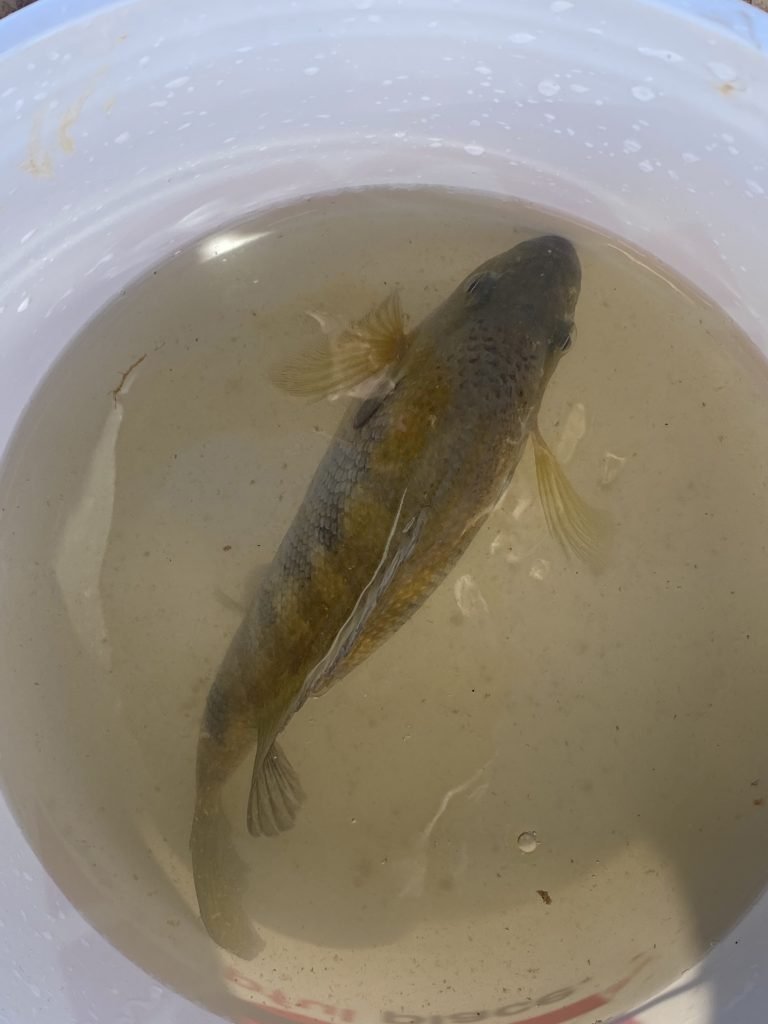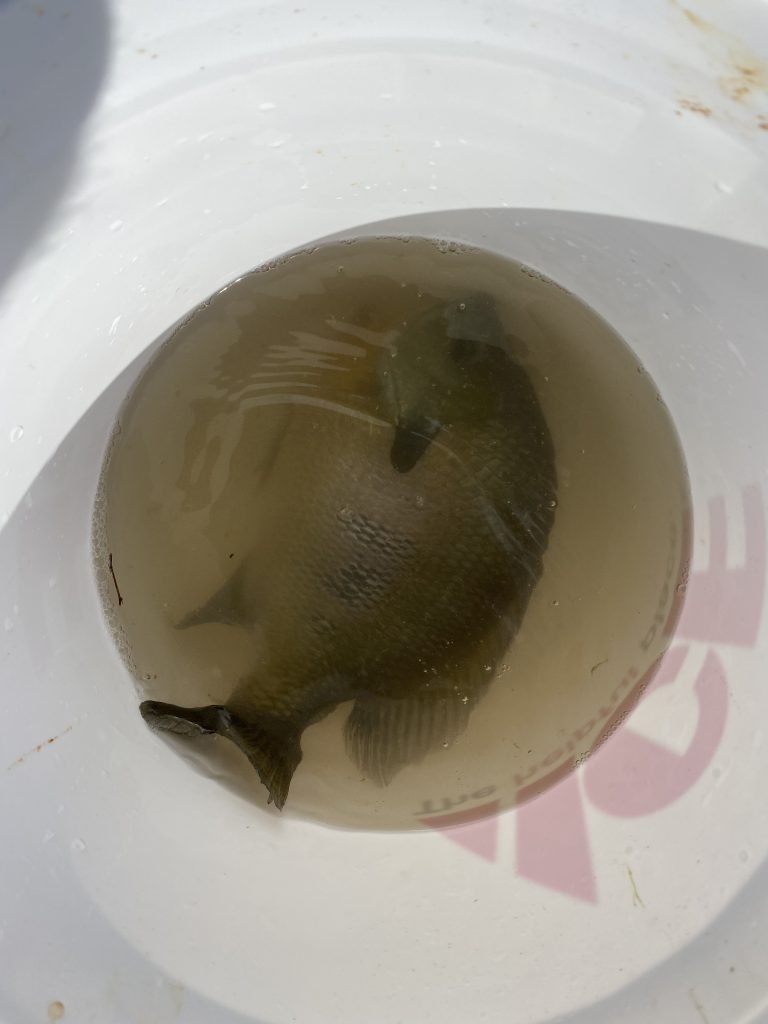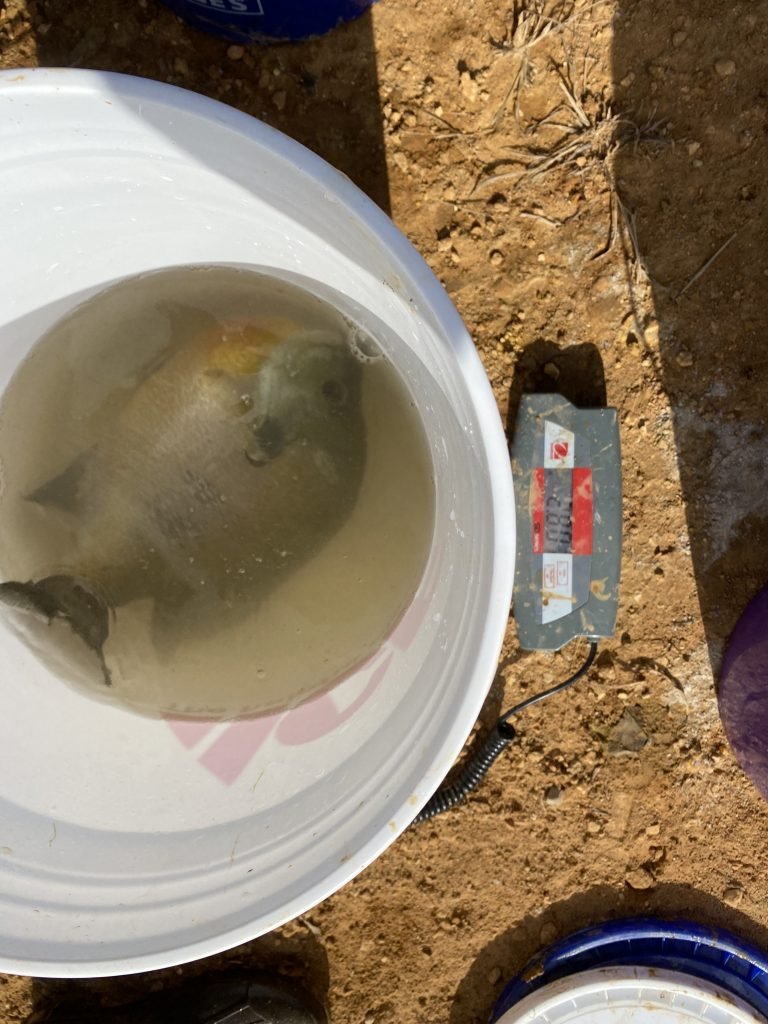When Is a 1.8-lb. Bluegill Small?
I have made posts in the past claiming that no one can touch my company when it comes to growing big bluegill. That encompasses both management and genetics. The management difference that we bring to the table can be witnessed by the fact that two different bluegill in the three-pound class were caught from ponds we manage during the same week, that being the first week of August 2019; one of those bluegill, a female northern bluegill caught from a 1.5-acre pond in middle Tennessee, was weighed and weighed two pounds fourteen ounces: The other fish, a male coppernose bluegill caught from a 7-acre pond in west Tennessee, was not weighed; the latter fish easily could have eclipsed three pounds:
The other fish, a male coppernose bluegill caught from a 7-acre pond in west Tennessee, was not weighed; the latter fish easily could have eclipsed three pounds: I always like to point out, when referencing a large bluegill seined from one of our hatchery production ponds, that bluegill in a production pond are not in ideal conditions, and normally don't grow nearly as fast as they do in a pond with predators. The average production pond for bluegill will have anywhere from 10,000 to 50,000 fish per acre...So there is a lot, LOT of competition for food, which means the fish won't grow as fast as they will in a pond with predators where the bluegill numbers will be a tenth or a fiftieth of what they are in a production pond. Fewer bluegill means more food per bluegill, which translates to a bigger average size.All that just to say, when a really big bluegill is encountered in a production pond, you can be assured that some special genetics are in play. We selectively breed both our hand-painteds and our coppernose bluegill; the breeding program for the hand-painteds has gone so well that nearly every time now that we seine one of our hand-painted ponds, we find at least one fish in the two-pound range. The last two times we seined hand-painted ponds, two different ponds, our biggest fish each time weighed 2.1 pounds. And these are 1-acre and 2/3-acre ponds respectively. Fish get bigger in bigger water bodies on average; a recent study in Georgia found that the single biggest determinant of bluegill size across all of the public impoundments in the study was impoundment size, followed by phosphorus content.We seined one of our hand-painted ponds today, and we had a beautiful male hand-painted that weighed 1.8 pounds, i.e. 1 pound 13 ounces:
I always like to point out, when referencing a large bluegill seined from one of our hatchery production ponds, that bluegill in a production pond are not in ideal conditions, and normally don't grow nearly as fast as they do in a pond with predators. The average production pond for bluegill will have anywhere from 10,000 to 50,000 fish per acre...So there is a lot, LOT of competition for food, which means the fish won't grow as fast as they will in a pond with predators where the bluegill numbers will be a tenth or a fiftieth of what they are in a production pond. Fewer bluegill means more food per bluegill, which translates to a bigger average size.All that just to say, when a really big bluegill is encountered in a production pond, you can be assured that some special genetics are in play. We selectively breed both our hand-painteds and our coppernose bluegill; the breeding program for the hand-painteds has gone so well that nearly every time now that we seine one of our hand-painted ponds, we find at least one fish in the two-pound range. The last two times we seined hand-painted ponds, two different ponds, our biggest fish each time weighed 2.1 pounds. And these are 1-acre and 2/3-acre ponds respectively. Fish get bigger in bigger water bodies on average; a recent study in Georgia found that the single biggest determinant of bluegill size across all of the public impoundments in the study was impoundment size, followed by phosphorus content.We seined one of our hand-painted ponds today, and we had a beautiful male hand-painted that weighed 1.8 pounds, i.e. 1 pound 13 ounces:
 However, that fish probably gets an inferiority complex whenever it's around a female that we found in our seine:
However, that fish probably gets an inferiority complex whenever it's around a female that we found in our seine:
 That's a 2.8-lb. bluegill. As in two pounds, thirteen ounces. And it was seined from a 1.5-acre pond that has no predators and which easily had 10,000 bluegill in it this morning.
That's a 2.8-lb. bluegill. As in two pounds, thirteen ounces. And it was seined from a 1.5-acre pond that has no predators and which easily had 10,000 bluegill in it this morning.
